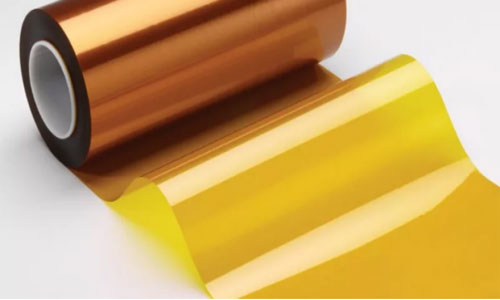Lithium-ion composite copper foil is a key component in the manufacturing of lithium-ion batteries. It plays a crucial role in ensuring the efficient and safe operation of these batteries.
The composite copper foil consists of a thin copper layer with a protective polymer coating, providing excellent conductivity and stability. This unique combination of materials offers several benefits. First and foremost, it enhances the battery's overall performance by improving the conductivity of the electrode materials. This, in turn, facilitates the rapid and efficient transfer of electrons during the charge and discharge cycles.
Additionally, the polymer coating on the copper foil provides essential insulation and helps prevent short-circuits between the battery's positive and negative electrodes. This insulation layer significantly reduces the risk of any internal issues that might compromise the battery's safety.
Furthermore, lithium-ion composite copper foil exhibits exceptional mechanical strength, which is crucial for ensuring the long-term durability of the battery. Its robust structure enables the foil to withstand various stresses during the battery's operation, including expansion and contraction caused by temperature fluctuations.

Due to the reduction in thickness, copper foils are prone to defects such as pinholes, wrinkles, and depressions during production. This leads to uneven coating thickness when applying active materials on the surface, and even leakage or penetration, which increases the internal resistance of the battery and reduces its cycle life. At the same time, the reduced thickness greatly decreases its mechanical strength, resulting in fractures during the production process of the negative electrode, affecting the stability and flatness of the negative electrode size.
Currently, using organic films as carriers and utilizing sputtering deposition technology to prepare composite copper foils, with the excellent plasticity of polymers and reduced overall weight of copper foils, greatly reduces the amount of copper raw materials used. Additionally, the insulating organic film as an intermediate carrier is beneficial to improve the safety of the battery, making it a promising new lithium-ion negative electrode current collector material in the lithium-ion industry.
This article provides a review and outlook on the preparation methods, technical challenges, research progress, and application prospects of polymer composite copper foils, aiming to provide reference for further theoretical research and industrial application of polymer composite copper foils.
I. Preparation methods of polymer composite copper foils
The preparation methods of polymer composite copper foils can be roughly classified into three categories. The specific preparation processes are as follows:
1. Mixing copper powder, conductive agents, and glue evenly to obtain a copper powder slurry. Then, using gravure coating technology, coat the slurry on the polymer base film and thicken the copper layer on the prepared base film through electroplating technology to obtain the composite copper foil.
In this process, the compatibility and dispersion of copper powder and glue are poor, leading to agglomeration of copper powder, resulting in large differences in the specific resistance of the base film and poor uniformity of the prepared composite copper foil.
2. Using polyester film as an insulating layer, coating the surface of the polyester film with glue using a dry lamination machine, and then drying the polyester film with a drying machine. Next, using a pressure roller machine to bond the electrolytic copper foil and polyester film to obtain the composite copper foil.
The composite copper foils prepared by this method have defects such as poor peel strength, which may cause delamination or detachment during use.
3. Using magnetron sputtering combined with electroplating technology to produce composite copper foils.
The specific preparation process is roughly divided into two steps, as shown in Figure 1.
The first step is to deposit a copper seed layer of 0.02~0.08µm thickness on a 4µm (PET/PI material) polymer film using magnetron sputtering deposition particle technology. Pure copper target with a purity of 99.999% is bombarded by high-energy charged particles to sputter copper atoms onto the surface of the base film, giving the polymer surface metal characteristics and obtaining a 4.5µm metalized base film.
The second step is to use electroplating technology to thicken the metalized film on both sides to 1µm, resulting in a novel polymer composite copper foil with a thickness of 6.5µm. The composite copper foil prepared by this process has strong peel resistance, good ductility, and uniform thickness distribution. It has been widely used in domestic new energy storage devices.
In comparison, the advantages and disadvantages of the above three processes are apparent. The first two require lower equipment requirements and smaller investment. The third process using magnetron sputtering technology has more stringent requirements on equipment and production conditions, as well as higher investment. However, in terms of product quality, the third process has the upper hand and is the trend for the future development of copper foil industry.
Technical difficulties and solutions of polymer composite copper foil technology
When using magnetron sputtering technology to prepare polymer composite copper foils, the crystallinity, low polarity, and
Contact: Pamela
Phone: +86 189 6365 3253
E-mail: info@industryprocess.com
Whatsapp:+86 189 6365 3253
Add: Yajing Industrial Park, No. 59 Shuangjing Street, Weiting Town, Suzhou Industrial Park
We chat
